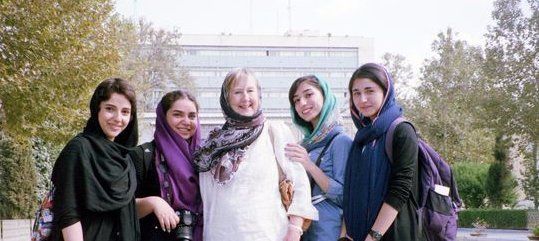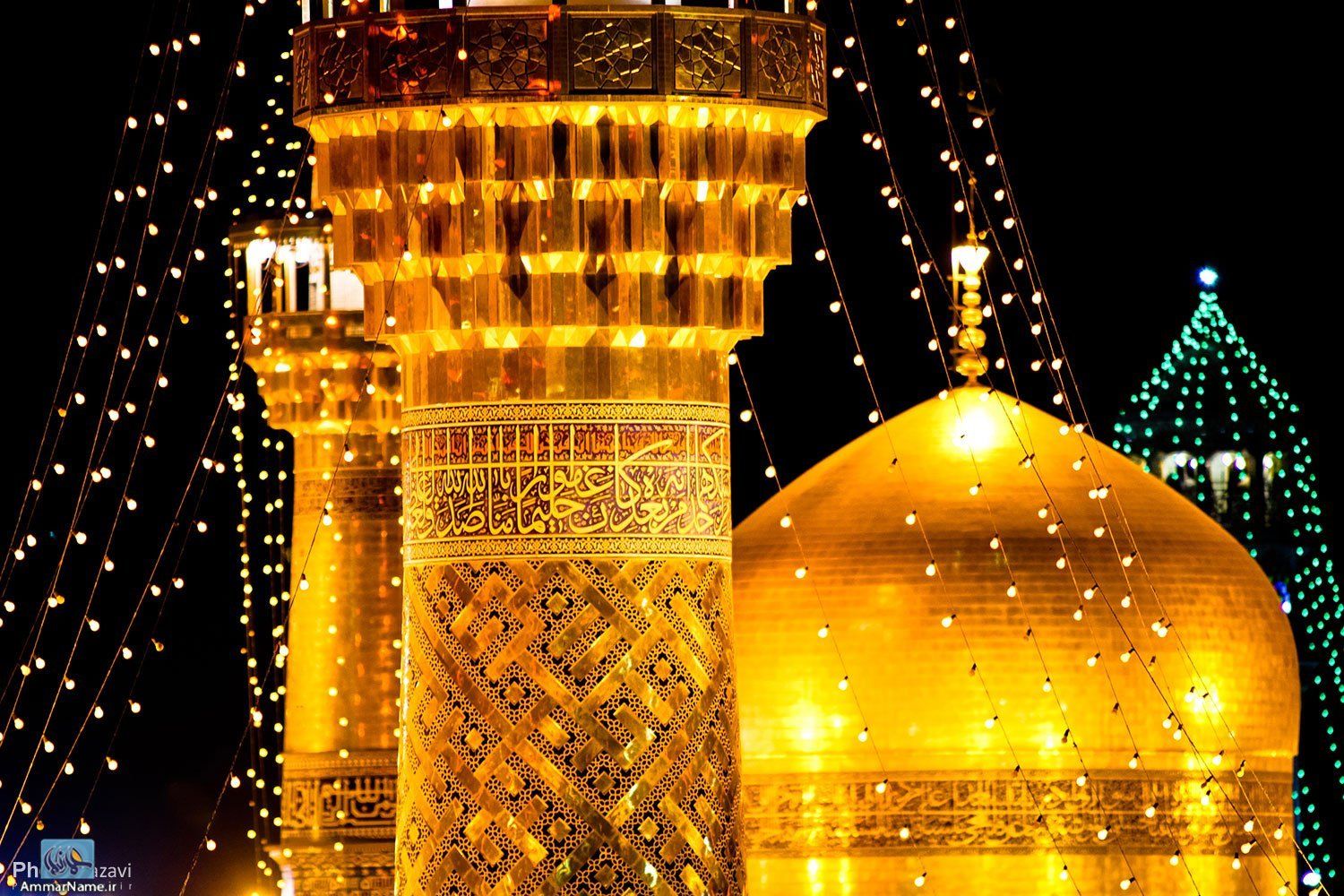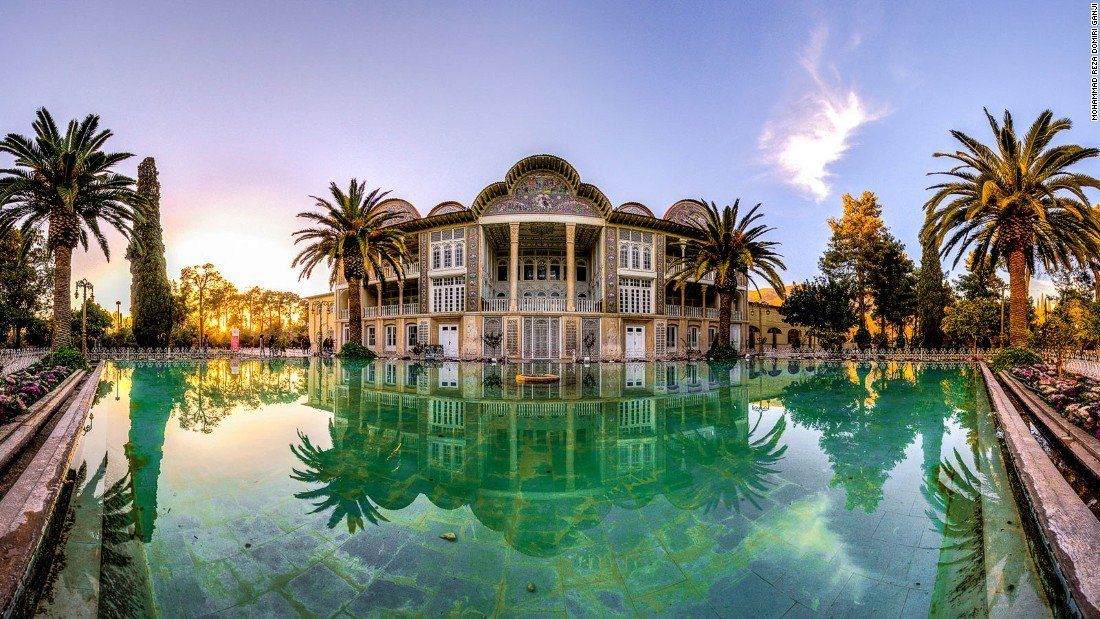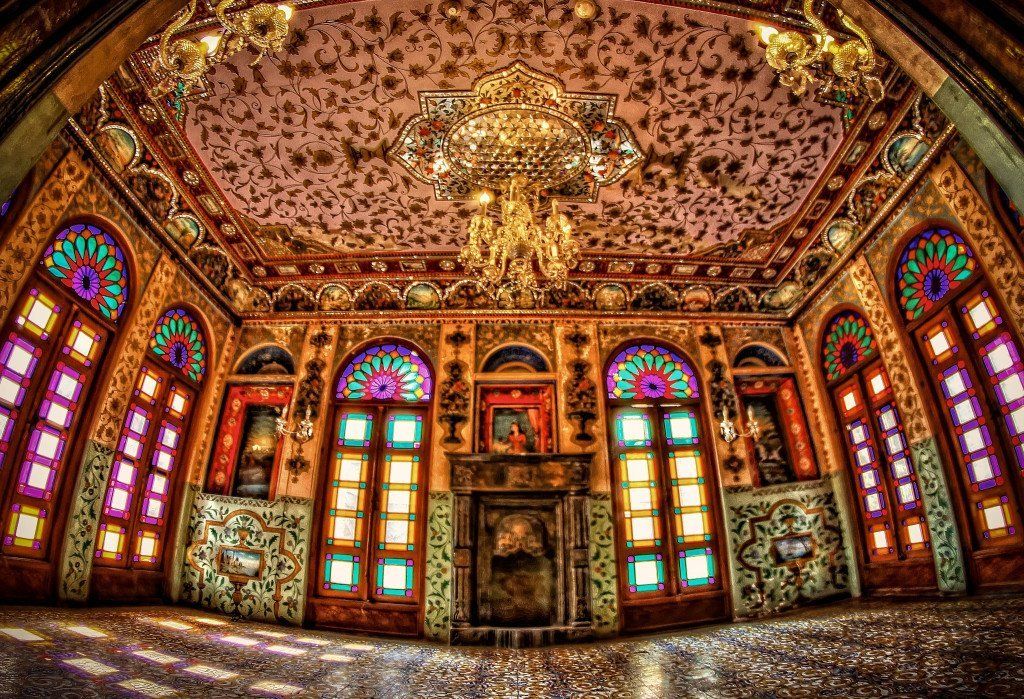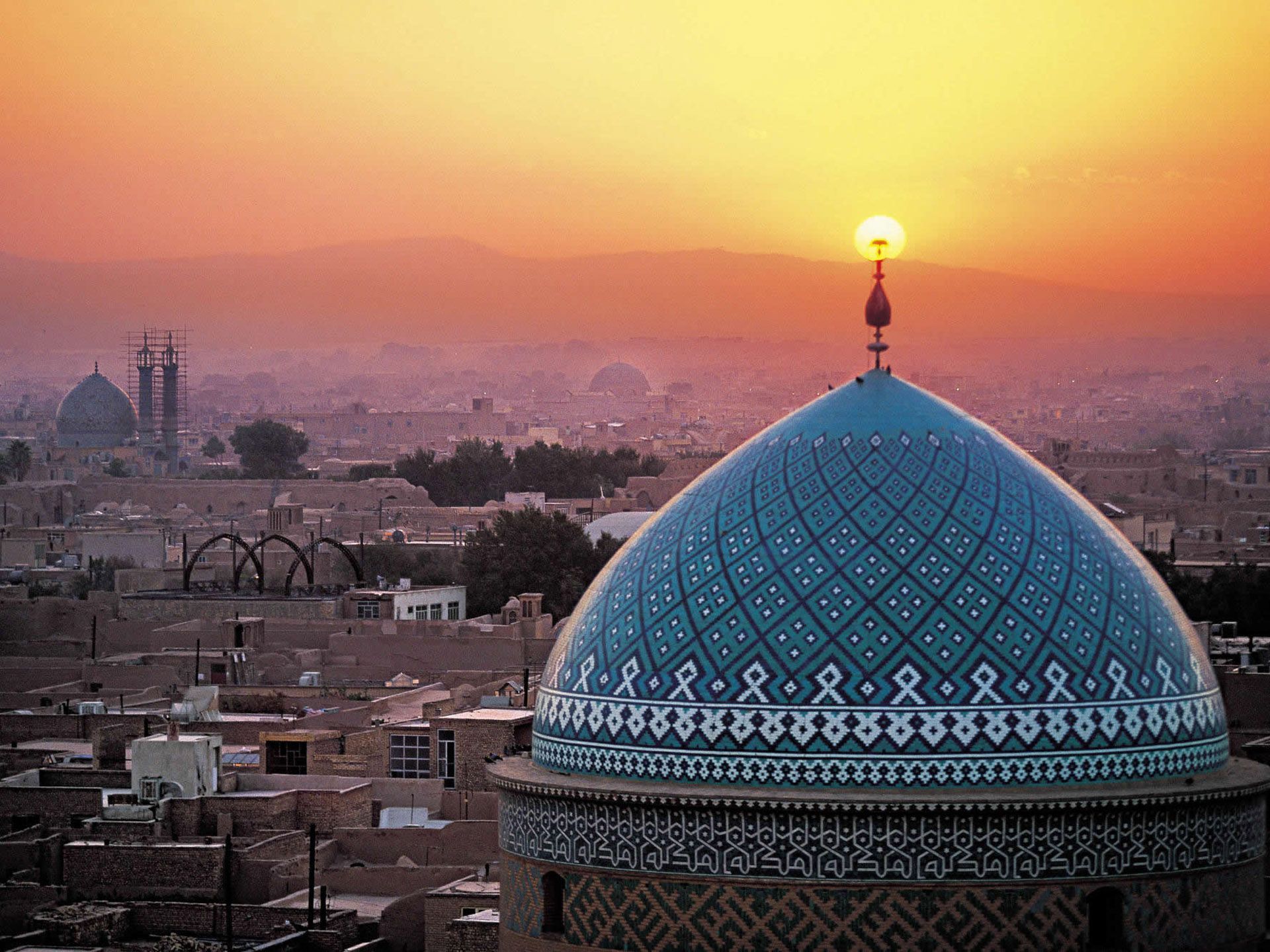Eram Garden
Eram Garden (Persian: باغ ارم - Bāq e Eram) is a historic Persian garden in
Shiraz, Iran. Eram Garden (Bagh-e Eram), located along the northern shore of the Khoshk River in Shiraz, is one of the most famous and beautiful Persian gardens in all of Iran. It should be noted that the word 'Eram' is the Persian version of the Arabic word 'Iram' which means heaven in Islam's most holiest of books, the Qur'an. With its beautiful grounds, lush plant life and aesthetic attractions, it's easy to see why Eram evokes such a description. With their beautiful flowers, refreshing air, aromatic myrtles and towering cypress trees, including one tree which is said to date back to 3000 years ago (Sarv-e naz), the Eram Gardens are a major tourist destination, especially during the spring.
Although no one is quite sure when construction of the gardens began, historical evidence suggests that the gardens were built during the Seljuk Dynasty (11th-14th centuries) under the rule of one of its most celebrated monarchs, Ahmad Sanjar. Like many other attractions in Shiraz, the Eram Gardens have been restored and repaired by the Zand kings of the Zand Dynasty (1750-1794), but during the later period of the Zand Dynasty, the garden changed hands to a Qashgai tribal chief, Mohammad Qoli Khan.
Mohammad Qoli Khan ordered the construction of the original mansion that stood on the grounds in the early 18th century, and planted various trees and plants in the garden including pine, orange, cypress and persimmon trees. Later on, during the rule of King Nasser ed-din of the Qajar Dynasty (1785-1925) Mirza Hassan Ali Khan Nasir-al Mulk bought the gardens from the Qashgai tribes and began construction on the present pavilion that now stands in the gardens.
As noteworthy as the gardens themselves, the pavilion was constructed by a local Shirazi architect, one Mohammad Hassan. The beautiful three-story structure was constructed based on the Safavid and Qajar styles of architecture, and includes tiles inscribed with poems from the famed Persian poet Hafez.
Don't miss out the 360 degrees intreactive image below. Please grab it with a click of your mouse and move it around:
Over its 150 years the structure has been modified, restored or stylistically changed by various participants. It was one of the properties of noble Shiraz Qavami Family.The building faces south along the long axis. It was designed by a local architect, Haji Mohammad Hasan. The structure housed 32 rooms on two stories, decorated by tiles with poems from the poet Hafez written on them. The structure underwent renovation during the Zand and Qajar dynasties. The compound came under the protection of Pahlavi University during the Pahlavi era, and was used as the College of Law. the building housed the Asia Institute. Today, Eram Garden and building are within Shiraz Botanical Garden (established 1983) of Shiraz University. They are open to the public as a historic landscape garden. They are World Heritage Site, and protected by Iran's Cultural Heritage Organization.
The main building of the garden consists of three stories. In the basement one can see a beautiful small pond while on the second floor, at the center of the building is a large porch with two high standing pillars.
On both sides of the large porch, two other small porches can be seen facing the rays of the morning sun. Two-meter high solid stone plates decorate the external façade of the building six of these plates have inscriptions in beautiful cursive Persian, depicting poems by some of the most famous Persian poets, notably Sa’di, Hafez and Shurideh. On the top of the façade, there are three large and two small crescent-shape tile works, each illustrating an epic or religions event painted on seven-colored titles. The seraglio is located in the back and is allocated to the convenience of the family members. The building also hosts a large pond in front of it.
The garden with its beautiful flowers, refreshing air, tall cypresses (a stately, beautiful cypress tree there known as sarv-e naz which is said to go back to 3000 years ago) and fragrant myrtles is a major tourist destination especially in the spring.
Further Reading:
























